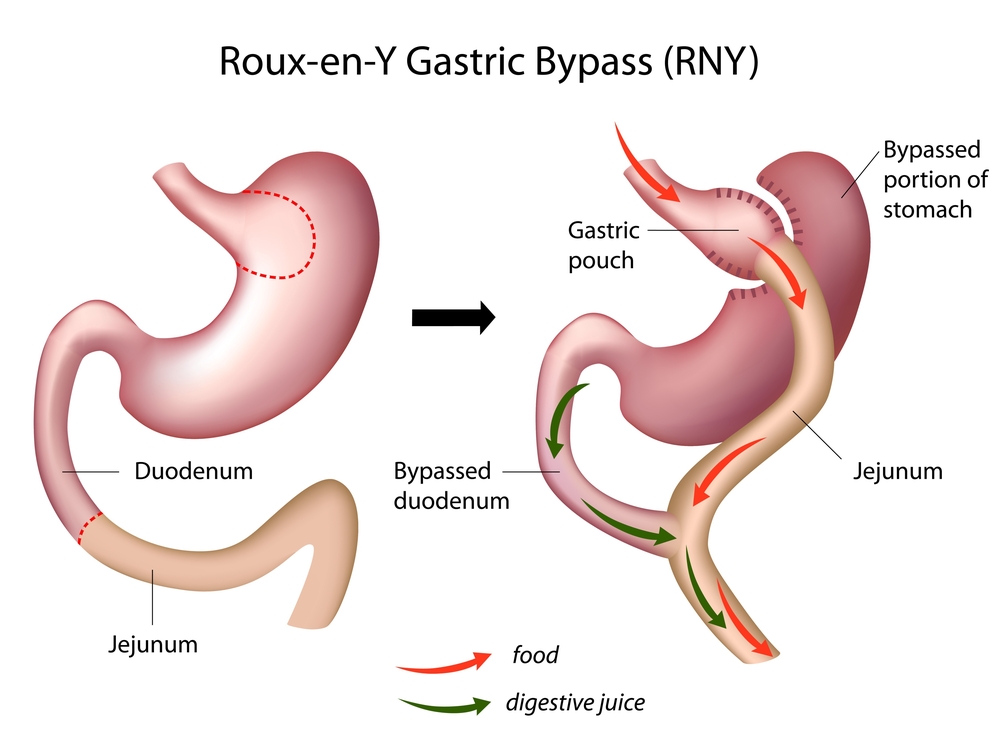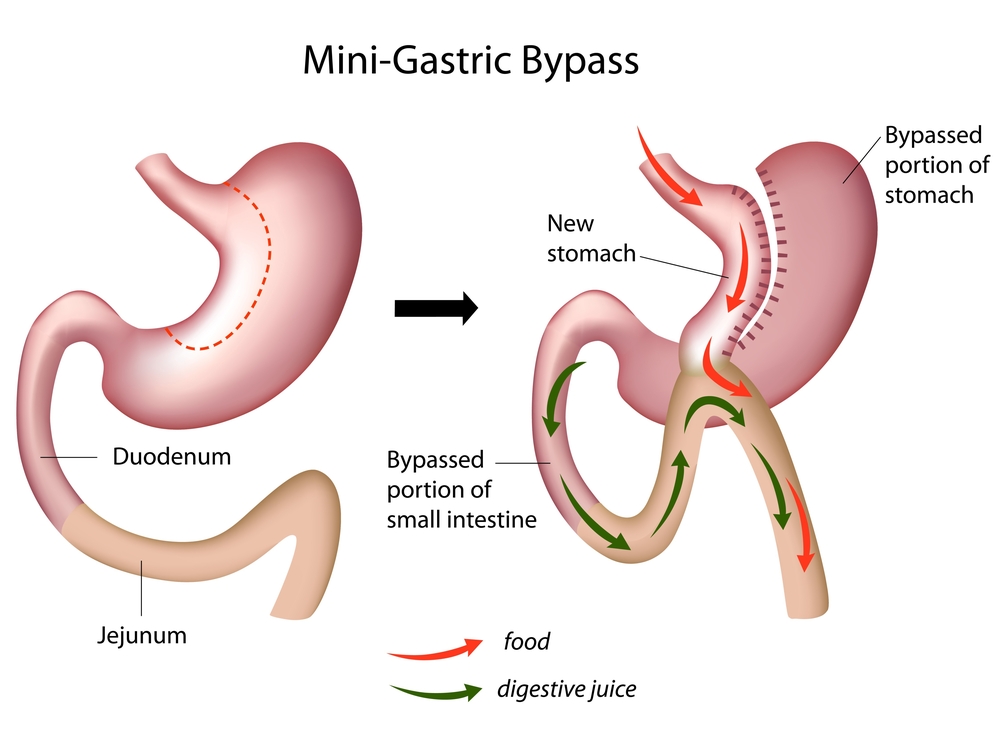Gastric Bypass Roux-En-Y
 Roux-en-Y Gastric bypass, or simply ‘gastric bypass,’ is one of the most common forms of weight loss surgery. However, as it is surgically heavier than the sleeve gastrectomy, it is being dethroned by the sleeve in the US, France, and South America.
Roux-en-Y Gastric bypass, or simply ‘gastric bypass,’ is one of the most common forms of weight loss surgery. However, as it is surgically heavier than the sleeve gastrectomy, it is being dethroned by the sleeve in the US, France, and South America.
In gastric bypass surgery, the surgeon staples off a large section of the stomach, creating a tiny pouch and then connects the small intestine to the pouch. Patients simply can’t eat as much as they did before surgery because this small pouch can only accommodate a few ounces of food at a time. When the pouch fills with food a feeling of fullness or satiety occurs. The reconnected intestine causes the food to bypass part of the intestine so some of the nutrients and calories in food will not be absorbed. Patients subsequently lose weight. Any patient who is a candidate for bariatric surgery is potentially a candidate for this operation.
It is important that patients who have had a gastric bypass procedure make a lifelong commitment to making the necessary changes in their diet. This includes maintaining an adequate intake of protein, taking vitamin and mineral supplements including a multivitamin, B12, iron and calcium, and avoiding sweets and fatty foods.
Advantages of Gastric Bypass:
Slightly higher total average weight loss reported than with purely restrictive procedures.
Disadvantages of Gastric Bypass:
- Cutting and stapling of stomach and bowel are required
- More potential operative complications
- Portion of digestive tract is bypassed, reducing absorption of essential nutrients
- Potential complications due to nutritional deficiencies
- “Dumping syndrome” can occur
- Procedure is not adjustable and difficult to reverse
- Higher mortality rate
Risks/Complications:
- Standard risks associated with major surgery
- Nausea and vomiting
- Separation of stapled areas
- Leaks from staple lines
- Nutritional deficiencies
Recovery Timeline
Hospital stay is usually 48 – 72 hours
Many patients return to normal activity within two and a half weeks
Full surgical recovery usually occurs within about three weeks
Mini Gastric Bypass
 The second type of Gastric Bypass is called Mini Gastric Bypass and is becoming popular despite a few controversies. This technique is easier than the Roux En Y and leads to better results, but the insufficient hindsight prevents it from being correctly appreciated. It requires only one anastomosis (connection between the stomach and the small bowel).
The second type of Gastric Bypass is called Mini Gastric Bypass and is becoming popular despite a few controversies. This technique is easier than the Roux En Y and leads to better results, but the insufficient hindsight prevents it from being correctly appreciated. It requires only one anastomosis (connection between the stomach and the small bowel).
It is praised in Europe and some Asian countries but still rejected in the USA.
The complications and side effects are similar to the Roux En Y Gastric Bypass.
